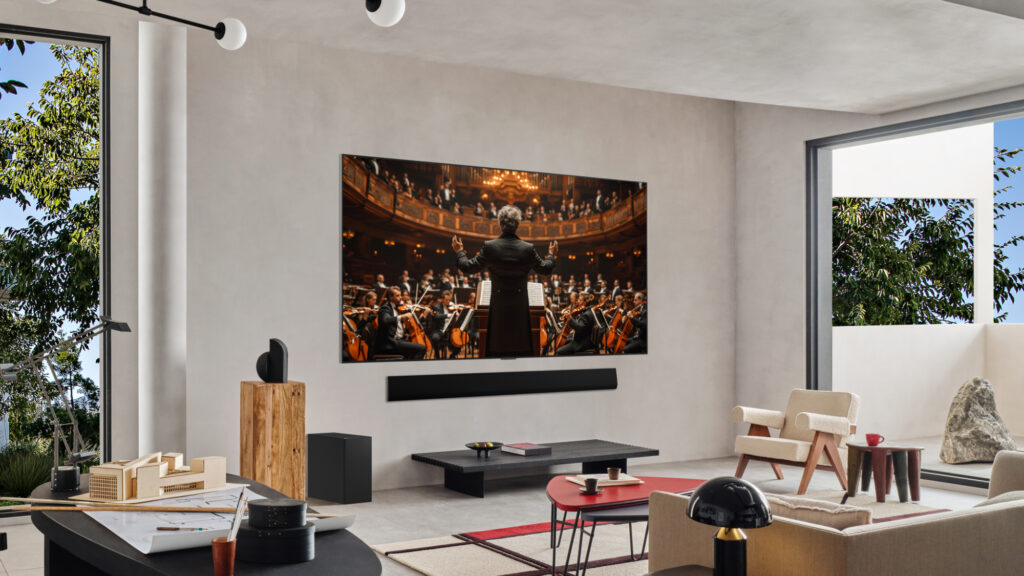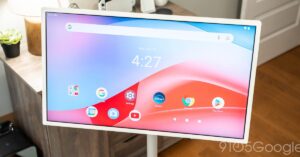
In the ever-evolving landscape of television technology, visual excellence has often overshadowed another crucial aspect of the viewing experience: audio quality. Despite the advancements in screen resolution and color accuracy, many televisions released in 2025 still struggle to deliver satisfactory sound. This persistent issue has led experts and consumers alike to seek external solutions, such as soundbars, to enhance their auditory experience.
However, a few manufacturers are beginning to address this gap directly. Notably, Hisense and Panasonic have made significant strides in integrating superior audio systems into their latest models, setting a new standard for the industry.
Hisense: Leading the Charge with Enhanced Audio Systems
Hisense has been at the forefront of this audio revolution, equipping its televisions with more robust sound systems. The 2025 Hisense U8QG Mini-LED TV, for instance, showcases this commitment with its advanced audio setup. The 65-inch model features a 4.1.2-channel system with a 72W output, which increases to 82W in larger sizes, ensuring a powerful and clear soundstage across its range.
This model follows the success of the previous Hisense U9N Mini-LED TV, which was praised for its dual side-firing speakers. The U8QG continues this trend, incorporating side-firing speakers and a subwoofer into its design, providing an immersive audio experience that fills the room.
Hisense 65″ U8QG Mini-LED TV: was $2,199 now $1,498 at Amazon
Such innovations have positioned Hisense as a leader in the field, making it a favorite among gamers and cinephiles alike, thanks to its 165Hz refresh rate and exceptional brightness.
Panasonic: Pioneering Software-Driven Audio Excellence
Meanwhile, Panasonic has re-entered the U.S. market with a bang, introducing the Z95A OLED TV. This model not only competes with Hisense on hardware but also excels in software innovation. The Z95A boasts a 160W output on a 5.1.2-channel system, offering unparalleled sound coverage.
Panasonic’s unique approach lies in its software capabilities. The Sound Focus and Space Tune features allow users to customize their audio experience, adjusting how sound reverberates in their space with settings like Area, Pinpoint, Ambient, and Spot.
Panasonic 65″ Z95A OLED TV: was $3,199 now $1,997 at Amazon
These features, combined with a robust audio system, elevate the Z95A to a new level of home entertainment. Following a recent briefing, Panasonic revealed that its upcoming Z95B OLED TV will further enhance these capabilities, promising an even wider sound stage and richer surround sound.
The Industry’s Over-Reliance on AI
While Hisense and Panasonic are making headway, many other manufacturers remain reliant on artificial intelligence to improve audio, rather than investing in superior hardware. This trend is evident even in premium OLED models, where the potential for audio excellence is often underutilized.
However, some brands are beginning to explore new possibilities. TCL, for instance, has partnered with Dolby to develop FlexConnect, a feature that allows users to place speakers throughout their home for a more immersive sound experience. Though this requires additional equipment, it represents a step forward in audio innovation.
The Future of TV Audio
The advancements by Hisense and Panasonic highlight a crucial shift in the television industry. As more consumers demand comprehensive home entertainment systems, the focus on audio quality is becoming increasingly important. This trend could lead to a new era where televisions offer both visual and auditory excellence, reducing the need for external audio solutions.
With these developments, the question remains: will other manufacturers follow suit, or will they continue to prioritize AI enhancements over tangible hardware improvements? As the industry evolves, the answer could redefine the home entertainment experience for years to come.





